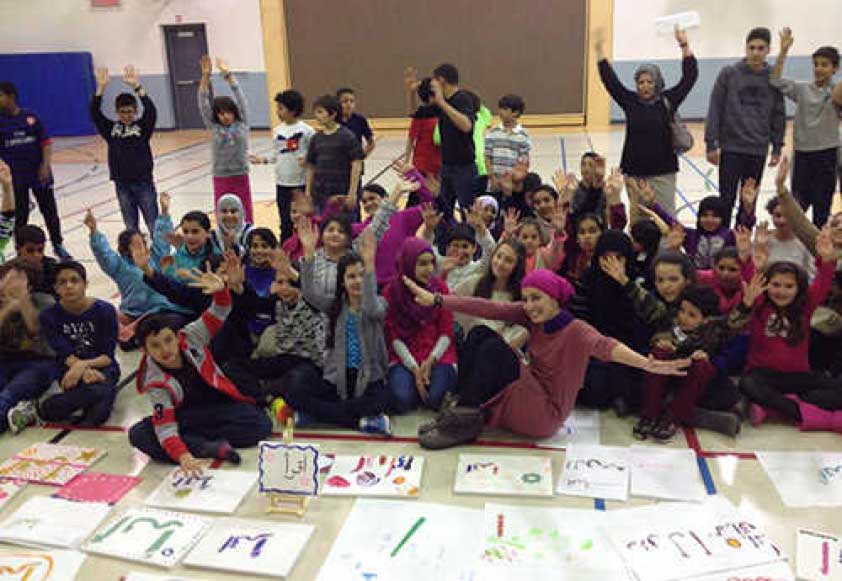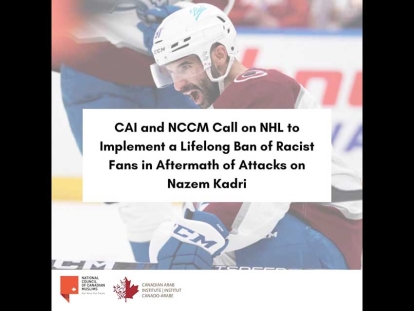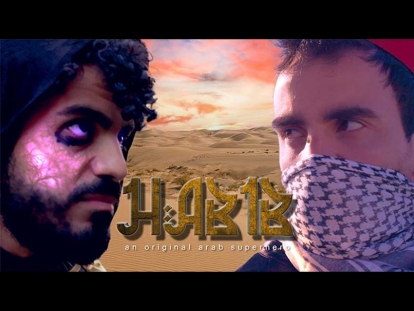 Nagat Bahumaid with Iqraa School students
Nagat Bahumaid with Iqraa School students
Apr
The Art of Islamic Calligraphy: A Hands-on Session at Iqraa School
Written by Nagat BahumaidLocal Artist Nagat Bahumaid was recently invited to teach a session on Islamic calligraphy at Assunnah Muslim Association's Iqraa Saturday School in Barrhaven, by school principal Dr. Aliaa Dakroury. Muslim Link asked her to reflect on the experience for our readers.
I learned Islamic calligraphy on my own. As a child who was passionately in love with art, I had a fascination with Islamic Art. I used to draw mosques and simple calligraphic phrases. As I got older, I was determined to learn it and develop my artistic abilities. I have a thirst for skill–building and knowledge; so I am always looking to learn different forms of art. Seeing beautiful calligraphy artwork by close friends and people around me also encouraged me to seek ways to develop my skills. I asked my parents to buy me calligraphy books from the Middle East and I used those books, in addition to other sources online I found through my own research, as my reference for learning the art and to practice. Through trial and error since it is not an easy art form. Because I did not take courses or go to a professional calligraphy school to learn it, I had to develop my own visual and learning guidelines. When you learn things on your own, you develop your own methods to do them.
Islamic Art has been powerful historically, yet today, sadly, it seems it's dying. I feel that in our communities this art is not well appreciated or supported much.
So it is with pleasure when an artist like me, who creates Islamic calligraphy, receives the opportunity to teach or share those skills with the younger generation. They in turn might grow to understanding it, learning it, loving it, and spreading it around communities across the country or globe. People growing up in the Middle East have an upper hand at learning this art form and being surrounded day-and-night by its beauty, but children born and raised in the West don't have the same opportunity. We only get to hear about it or see it if we happen to come across calligraphy artwork by other artists in events that display such art, or we learn about it through friends or family members who happen to practice this art.
Our communities have few opportunities to engage youth, and when they do, the majority of those activities involve sports and are most are likely to be gender-based. We rarely get to see community activities that foster artistic and creative skills, let alone Islamic Art. So it is crucial that we encourage Muslim communities and families to put more time, effort, and funds to cultivate this art for a more Islamic Art-friendly community. At a time when integration issues and identity crises are evident, fostering this art might help youth become more familiar and rooted within their own Muslim and cultural identities. It could also help children learn more about the beauty of the Arabic language.
I didn't know at first what to expect from the children at Iqraa School as I have never shared my skills or taught anyone Islamic calligraphy. I was nervous they would find it complicated, but I had kept it simple and the children got so into it. It was enjoyable to watch and experience how children at different age and skill levels would take in the lessons I was giving.
To learn more about Iqraa School visit https://www.facebook.com/IqraaArabicSchool
To learn more about Nagat Bahumaid's art and photography visit https://www.flickr.com/photos/nagat-b/
This article was produced exclusively for Muslim Link and should not be copied without prior permission from the site. For permission, please write to info@muslimlink.ca.












